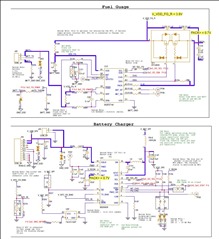Other Parts Discussed in Thread: EV2400, BQSTUDIO
Tool/software:
We are currently testing the BQ27Z746YAHR fuel gauge and BQ25628ERYKR and have observed behavior that we would like to clarify.
During our testing, we noticed the following:
- We connected a 3.7V, 1500mAh battery to the battery connector prior to flashing or programming the fuel gauge.
- In this state, we observed that the PACK pin of the BQ27Z746YAHR fuel gauge,measures approximately 0.7V assuming that the fuel gauge may not be sensing the battery correctly .
Could you please confirm if this is the expected operation for this device
If this is not the expected behavior, could you provide guidance on what we should expect to see and if there are any steps we should take to address this issue? Please refer the attached dsn for your reference




